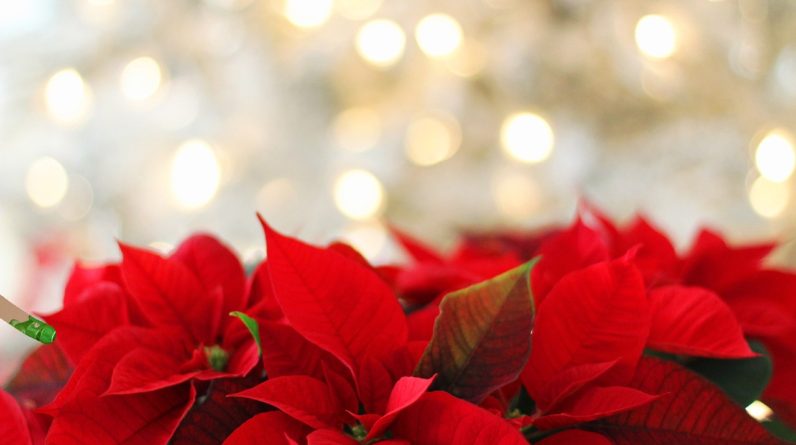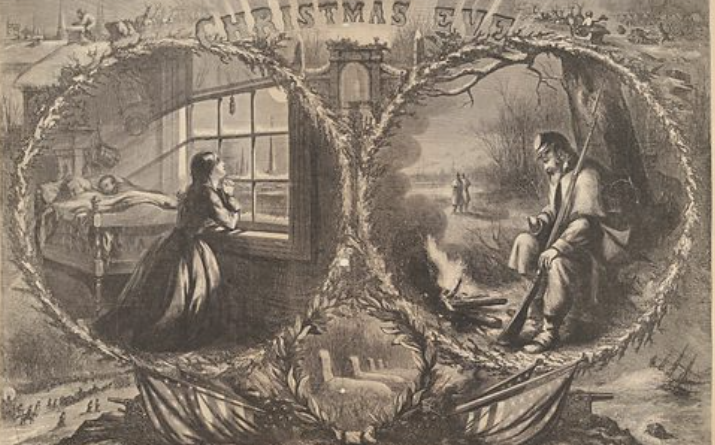
Origins of American Christmas Traditions
Origins of American Christmas traditions have their unique stories. It’s crucial to understand the precise origins of each tradition in order to properly appreciate why we Americans observe various customs during the Christmas season. That is the main topic of this chapter.
It may be interesting to know that many of the Christmas customs we observe during the holiday have absolutely nothing to do with America. Keep in mind that America was once made up of a diverse population from many different nations. Additionally, these people brought their own “homeland” traditions with them.
The Holiday Tree
Christmas trees, in addition to a stunning layer of recently fallen, glittering snow, truly make the season unique. Each has a unique personality. similar to snowflakes.
However, did the custom start in America?
Definitely not!
Origins in Germany
Actually, it started in Germany. Winfred was a missionary who served in the area in the eighth century. This man later became a saint and was given the name St. Boniface. According to legend, St. Boniface just so happened to cross paths with some pagans who were offering a young boy as a human sacrifice to their deity Thor near an oak tree.
St. Boniface was furious when he saw what he did and immediately cut down the oak tree. St. Boniface discovered that a tiny fir tree had suddenly appeared in its place after the tree had been cut down.
The picture of the fir tree represented Christianity and everlasting life at this time and for all time to come.
A living tree was not traditionally brought indoors until the 16th century. The precise originator of this custom is a subject of much conjecture. But consider this case.
Martin Luther
A man by the name of Martin Luther witnessed an incredible sight while out for a winter evening stroll in the year 1500. According to some, it was Christmas Eve. In the woods, he came across a tiny group of evergreen trees that were dusted with recently fallen snow and appeared to shine at night.
Martin Luther wanted to tell his family about this sight since he thought it was so lovely. In order to replicate what he had seen, Martin Luther chopped down a little fir tree, brought it inside, and adorned it with tiny, lit candles fastened to the branches. It is thought that the candles were lit to represent the stars in the night sky, which sparkled over the tiny town of Bethlehem on the first Christmas Eve.
That was the first instance of an inside Christmas tree that has been proven. However, most people attribute Martin Luther’s role in decorating the first Christmas tree in the aforementioned account.
The indoor Christmas tree became increasingly popular as a German tradition in several locations from around 1500 until about 1700.
More Decorations
After 1700 or so, adding lights and decorations like apples and other items really helped this ritual take off and swiftly earned “tradition” status throughout the nation.
Even the Hessian soldiers are said to have abandoned their posts on Christmas Eve during the Revolutionary War of 1776 to celebrate at what is now more formally known as Trenton, New Jersey, with thoughts of home. They were consequently vanquished by George Washington’s army.
Queen Victoria the Trendsetter
Then, in or around 1848, Queen Victoria of England received a Christmas tree as a gift from her husband, Prince Albert. Because Price Albert was of Germanic ancestry, having an indoor, decorated tree would have been more customary for him.
The people came to the conclusion that “if it was good enough for the Queen we love and revere so much, then it must be good enough for us!” when they saw this beautifully decorated and glowing interior tree. Thus, the “royal” custom of a Christmas tree became a part of the holiday season in an increasing number of homes throughout England.
The custom of an indoor, freshly cut, and decorated Christmas tree eventually merged with American culture and by the 1960s was widespread.
Since then, the Christmas Tree has come to represent the long-standing, foreign-influenced American Christmas holiday customs.
Yuletide Log
The Yule Log, as we have come to know it, is a sizable log of wood that is burned on Christmas Eve in the fireplace. It is cylindrical in shape.
You could also be familiar with it as a tiny dessert that looks like a log of wood.
They both came from the same place, any way. Europe’s north. Even though the Yule Log was used in diverse ways around the country, Christmas Eve celebrations were always one of its main uses.
The Yule Log was often placed indoors, lighted in the fireplace, and kept burning for somewhere between 12 hours and 12 days. Which may be how the concept of the 12 days of Christmas originated.
Good Luck Omen
It was thought that a household would have good luck in some way for every member of the home that the warmth of the fire from the Yule Log touched during the Yule burning rite. Typically, this connotes living a long, healthy, and happy life.
Additionally, it was seen as an homage to Odin, the Norse deity of death, wisdom, and battle. Additionally, Jolnir was the name given to Odin in Scandinavian mythology. It’s noteworthy to note that the aforementioned name shares its first three letters with a well-known Solstice event, which when pronounced sounds like “Yule.”
Over to England
Finally, this custom made over to England, where the Yule Log gathering involved the entire family. Family members would go into the woods, choose a large tree, cut it down, make one great log out of it, and drag it back to their house with ropes. It was necessary for the log to be large enough to burn for 12 days.
It was generally accepted that taking part in the dragging would bring you luck for the entire upcoming year.
A Christmas Cycle
A tiny portion of the log was retained once its burn cycle was complete in order to ignite the Yule Log the following year. In fact, portions of the Yule Log’s ashes were dispersed across landowners’ fields to guarantee a good crop the next year.
When our English ancestors immigrated to America, they brought with them this custom, which has since become a staple of our Christmas celebrations.
Christmas Songs and Carols
It’s unclear when Christmas carols were first performed. Some others assert that carols, which are derived from the French term carole, which means “kind of dance,” date back to the fourth or fifth century. Others claim that the genesis of carols as we know them now occurred between the 12th and 13th centuries, with the Roman Catholic saint St. Francis of Assisi setting the example.
The work of origination is made more challenging by the fact that carol singing is an unwritten practice.
A Traditional Dance
As the word “carole” or “carol” suggests, there were no Christian connections at all in the beginning. In the past, when someone would “carol,” they would be doing a traditional cultural dance, frequently to music. The term is accompanied with song in the French translation. There was no singing involved in the early stages.
What is understood is that St. Francis of Assisi popularized caroling by fusing the singing of Christian melodies with Christmas church services. However, where did these hymns originate? They are thought to have been composed around the fourth or fifth century A.D., honoring the birth of Jesus Christ.
But why do holiday singers still go door to door in groups today, singing and ringing in the season?
Singing for Their Supper
This aspect of Christmas carol singing is thought to have started in the 16th century or thereabouts as the impoverished went door to door “singing for their supper” until they were given enough food and drink to last them for the night.
The Christmas carol as we know it today was popularized in England during the Victorian era, but it took until the late 19th century for it to gain widespread acceptance in America.
Giving Christmas Gifts
For the majority of Christians, presenting gifts makes sense as a representation of the first Christmas Eve when the Three Wise Men presented gifts to the Virgin Mary and the infant Jesus to commemorate his birth.
In fact, this is where the custom of giving gifts first started. Of course, during ancient festivities or festivals, subjects would present presents. This was common throughout history and throughout various civilizations, including the Romans and the Egyptians. You wouldn’t be familiar with them unless you were a historian or academic.
The idea of giving gifts hasn’t changed much over the years, but the actual practices have. Gifts and presents have been wrapped with fancy papers, ribbons, and bows ever since the Victorian era. And now, rather than being left at the feet of Kings, gifts are dispersed beneath Christmas trees or found tucked away in our stockings.
Even if some people might forget the origins of the custom of giving gifts, the message that these presents convey is one of amazement, joy, and surprise.
What is a Candy Cane ?
Would you believe that the Candy Cane as we know it now was once created as a means of silencing kids?
It is a fact!
During the lengthy church Christmas services, a choirmaster at the Cologne Cathedral in Germany in the 1670s bent one end of a popular sweet, a “sugar stick,” to resemble a shepherd’s staff. As soon as this novel concept reached America, churches there started carrying out the same custom.
Candy canes were initially primarily used in religious celebrations with a Christmas theme. However, there is one known instance of someone who used the customary “white” sweets to decorate their own Christmas tree.
In Wooster, Ohio, in 1847, a German immigrant by the name of August Imgard decorated his family’s Christmas tree with candy canes.
Thanks, Bob !
The Candy Canes were once completely white and devoid of any other color. For his family, neighbors, and friends up until the 1920s, Bob McCormack started creating the Candy Cane as we know it today, complete with the red stripes. Every year, Bob completed this operation entirely by hand.
All of that changed around 1950 when Gregory Keller, a Catholic priest and his brother-in-law, developed a machine that automated the production of candy canes.
Now, everyone enjoys candy canes, whether they are the classic red and white striped peppermint candies or the multicolored fruity flavored ones.
The Holiday Card
No, this wasn’t initiated by Hallmark. In 1843, it was a man from England by the name of Sir Henry Cole. Because he wanted to aid the less poor people, Sir Henry sought a way to send Christmas greetings to his family and friends asking for their help. And it would take time and effort to write each one down by hand. Try saying that quickly three times.
He therefore engaged John Calcott Horsley to continue the process. John got to work and started by hand painting a picture of a happy Christmas with family onto a greeting card.
Christmas Greetings Immortalized
“A Merry Christmas and a Happy New Year to You,” the caption that appeared beneath the image stated. The concept of sending Christmas wishes and greetings did catch on, even though Sir Henry’s friends and family weren’t moved to join his cause and he didn’t send any more cards the following year.
The first widely used Christmas cards were created by Kate Greenaway, a well-known Victorian children’s book author and illustrator, with assistance from Frances Brundage and Ellen Clapsaddle in the late 1800s and early 1900s.
Even yet, American citizens who wanted to send Christmas cards abroad had to import them directly from England for around 30 years following this. So the Christmas card was invented and became a tradition in England.
Cards Finally Made in the USA
Louis Prang, a German immigrant, opened his own lithography business in the United States in 1875. Initially, Louis didn’t design the classic-looking Christmas cards that are so well-known today. As more individuals asked for wintery images and holiday greetings, Louis created some of the most exquisite artwork ever seen by the human eye. Louis was producing more than 5 million Christmas cards annually by the year 1881!
Can you say millionaire?
In stores around the United States nowadays, we may buy a wide variety of Christmas cards with every kind of holiday greeting.
Poinsettia Pronunciation
poyn·seh·tee·uh
That’s how you say it. So what is with that lovely plant that so many of us buy for a blaze of Christmas color?
After reading that the majority of American holiday customs had European roots, one would assume that the custom of decorating homes with poinsettias also originated in that continent.
Well, if you believed that, you would be wholly mistaken.
Actually, Mexico is where this custom originated!
That’s accurate. Mexico is the right response.
Joel Roberts Poinsett is the man responsible for the American custom of decorating our houses with poinsettias. Look at the name, for example! You anticipated its arrival:-).
We might never have ever known about this lovely and festive bloom if it weren’t for Joel R. Poinsett’s passion for botany. Joel Robers Poinsett was given the honor of serving as the United States’ ambassador to Mexico in 1825.
He came across the vividly crimson bloom while traveling to Mexico. As a professional botanist, he fell in love with it right away and sent some of them back to Greenville, South Carolina.
He started growing the flowers in his hothouses for a short while, then started delivering them as Christmas gifts to his friends and family.
We now exhibit them in our personal spaces. and can buy them at any greenhouse or neighborhood store.
By designating December 12 as National Poinsettia Day, Congress has recognized the poinsettia. Today is dedicated to Joel Poinsett, who passed away on December 12, 1851. Give this lovely plant as a gift to celebrate National Poinsettia Day.
There is no Conclusion
Conclusion is the wrong term to use ending this article. These traditions will continue year after year, as long as Christmas is celebrated. And I hope that will be for a long time after I am gone.
Even while not many of the customs we now observe as part of Christmas in America originated here, the civilizations that gave rise to them valued them. They still have significance for us now. even if the context differs somewhat.
Hey, how about Santa Clause? Well, he is so cool that he rates an article by himself. Click here to be taken there.



